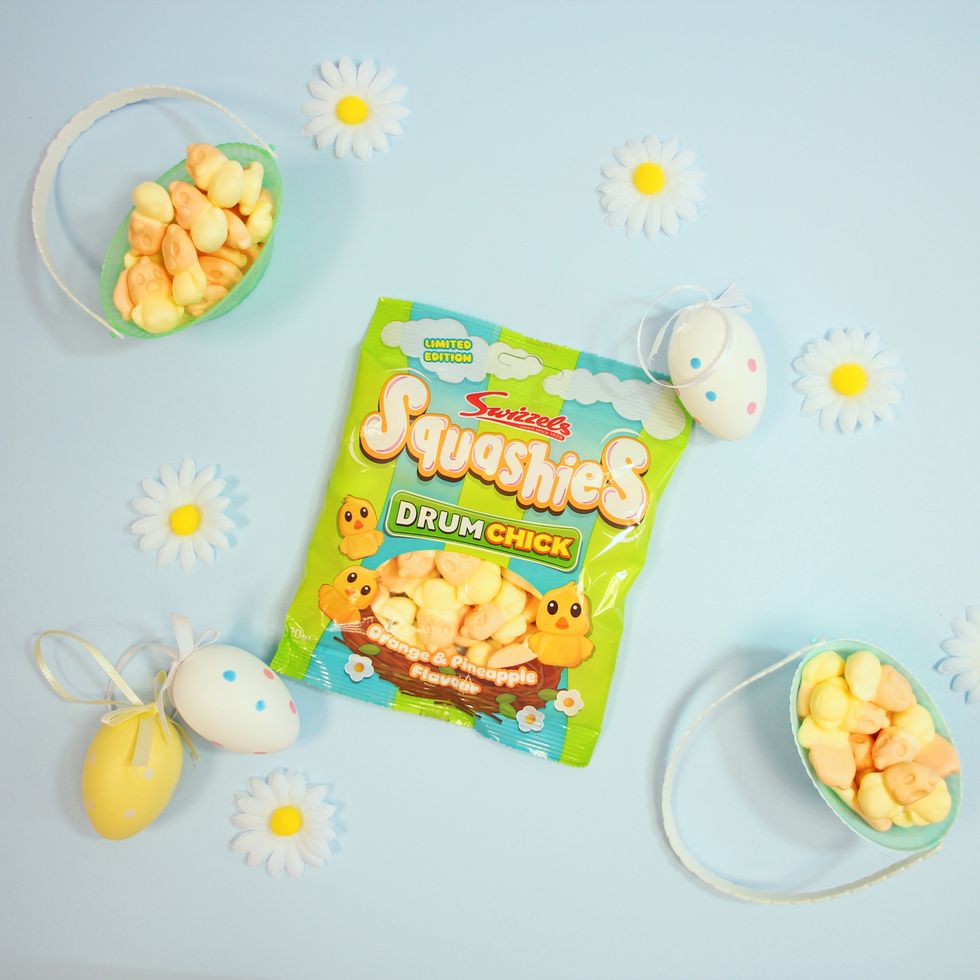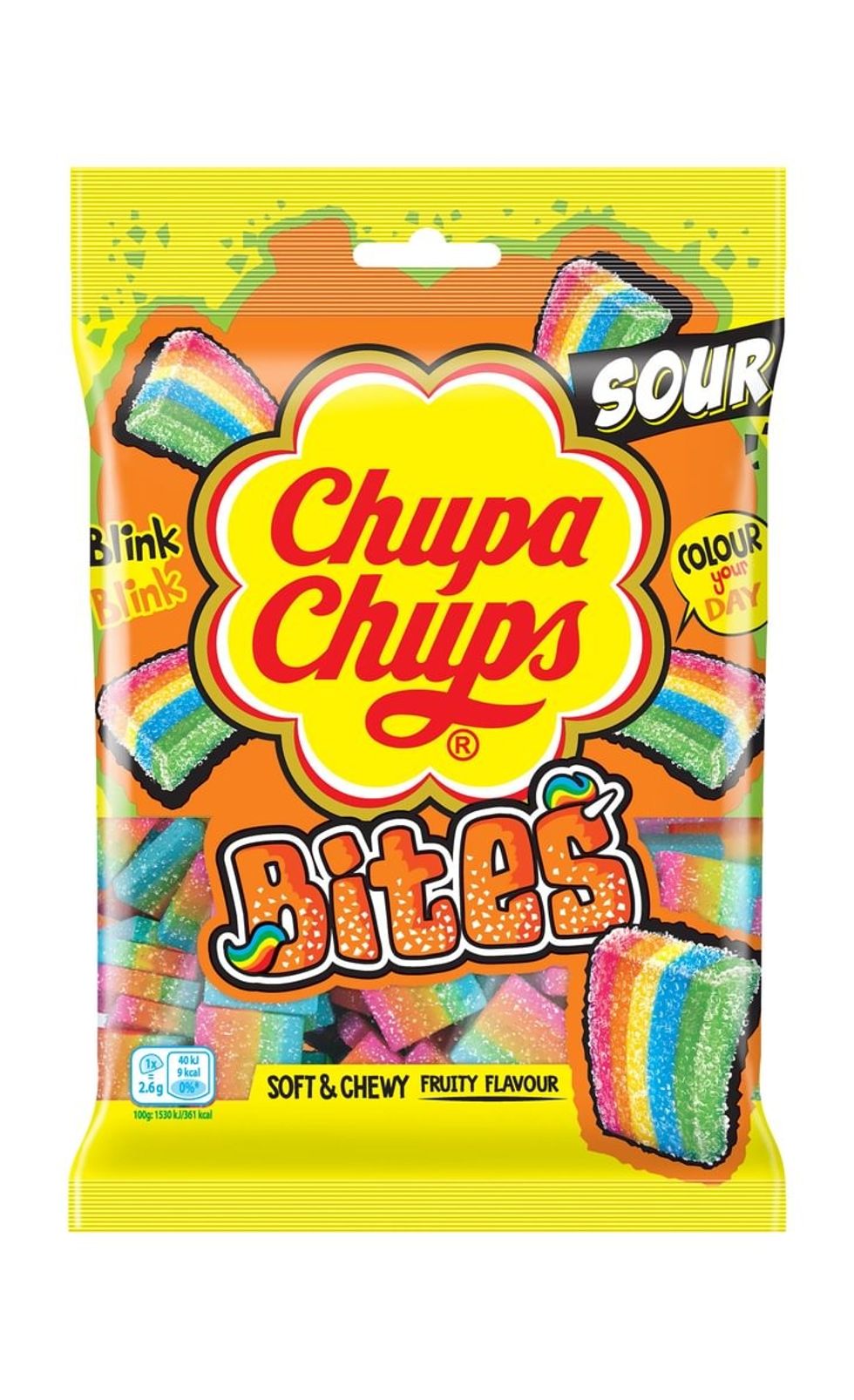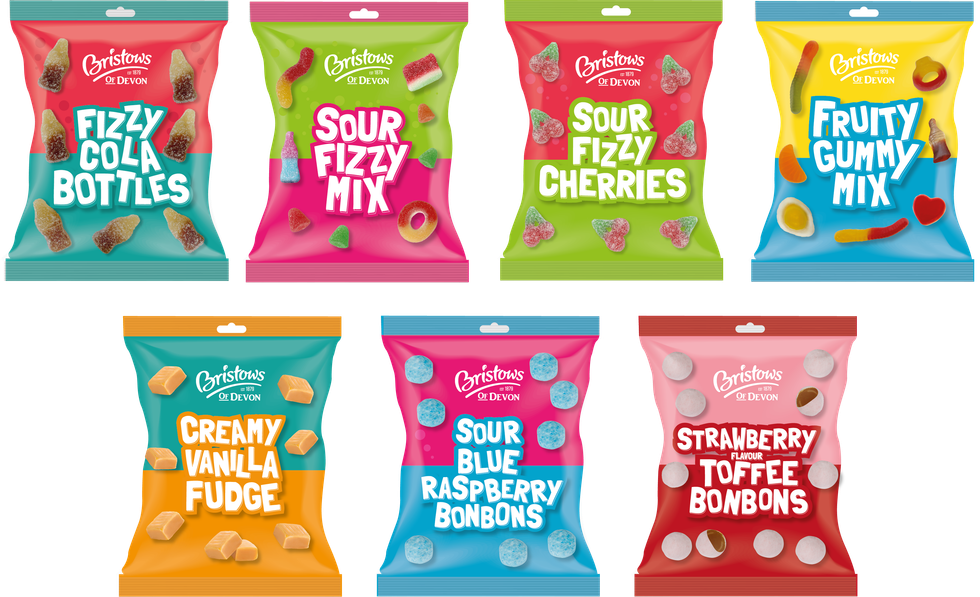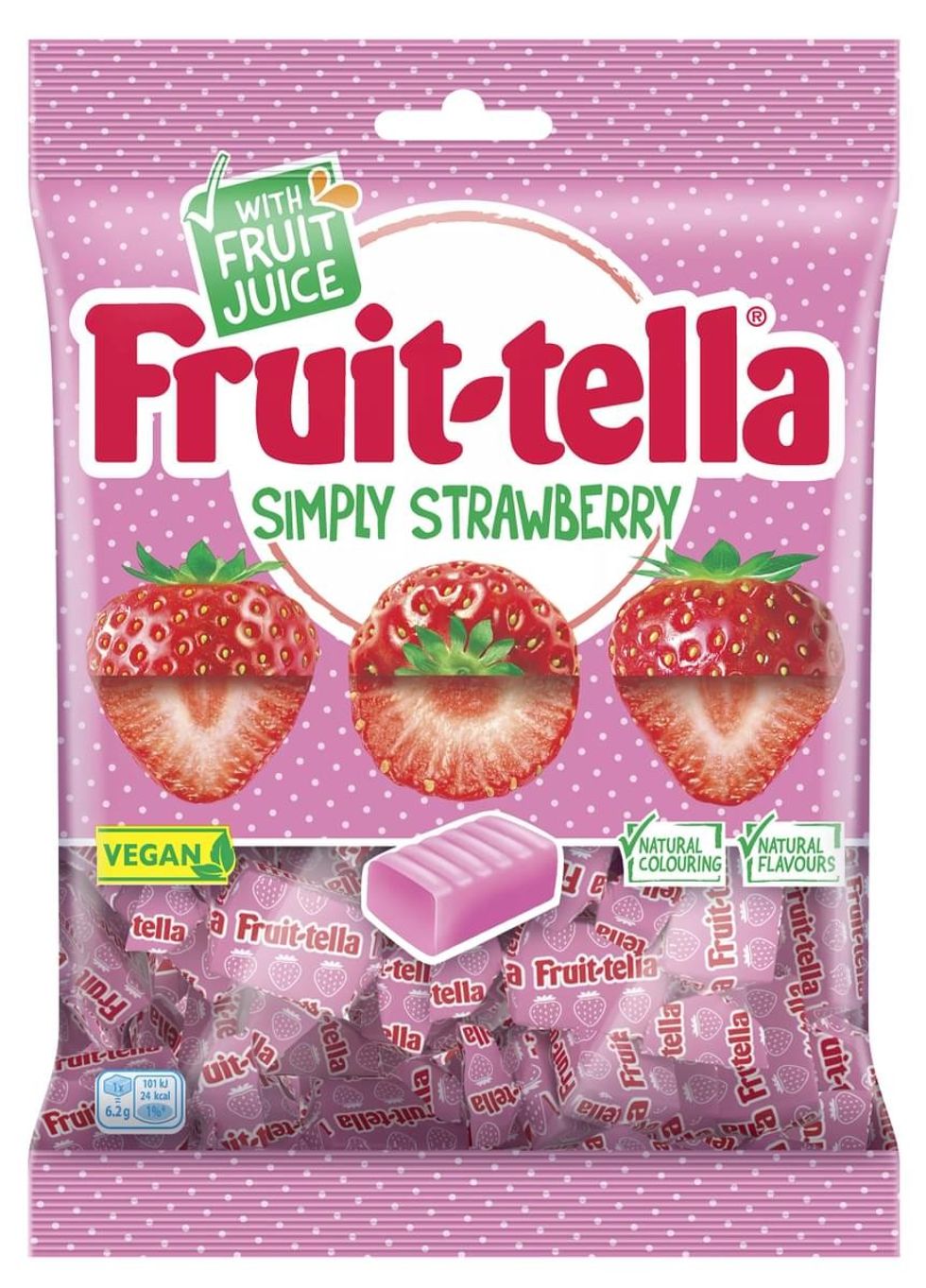The chocolate and confectionery category continues to demonstrate remarkable resilience in the face of significant challenges, with the UK convenience channel seeing impressive growth despite economic headwinds. The confectionery market remains a cornerstone of sales for independent retailers, valued at £2 billion and growing 4.4 per cent in the convenience channel [Circana].
The sugar confectionery category has seen value sales exceed £665 million, growing at a rate of 3.1 per cent, driven by the continued popularity of sharing formats and multipacks, which reflect evolving shopper preferences for value and convenience.
The chocolate confectionery market continues to evolve, with value sales reaching £1.4 billion, showing steady growth of five per cent, with gifting and seasonal formats leading the charge.
Gifting chocolate, encompassing boxed products, Easter eggs, and seasonal novelties, has experienced a strong value growth of 13 per cent, along with volume growth of three per cent, making it the standout segment in the category.
Supply chain woes
Raw material pressures have been at the forefront of industry concerns, with cocoa prices particularly affected. “The last year has been difficult for chocolate manufacturers due to the significant raw material increases, cacao prices have soared,” explains Gavin Cox, founder of Cox & Co.
Kate Whapshott, Head of Marketing at Montezuma's Chocolates, elaborates on these challenges, noting that the “turbulent few years” stem from “supply chain disruptions, extreme weather in key growing regions, and increased global demand.”
“Inflation has also impacted production costs, from ingredients to packaging, leading to price hikes across the industry in both chocolate and confectionery,” she adds.
In response, manufacturers have implemented strategic adaptations. Cox reveals that brands have “reassessed product sizing to reduce costs but still remain competitive – this has to happen in order for brands to survive.” His own company introduced “15g mini bars, but this has been coupled with flavour NPD so we can offer something new and exciting for our customers.”
“This flavour NPD is noticeable across the confectionery market as brands react to raw material prices, but want to retain customer loyalty,” he adds.
Innovation extends beyond product formulation to packaging, with Cox noting “more pressure for recyclable or compostable product packaging.” His company has introduced “paper flow wrap for Cox & Co as an example, which not only benefits the environment, but also reduces our overall packaging volumes.”
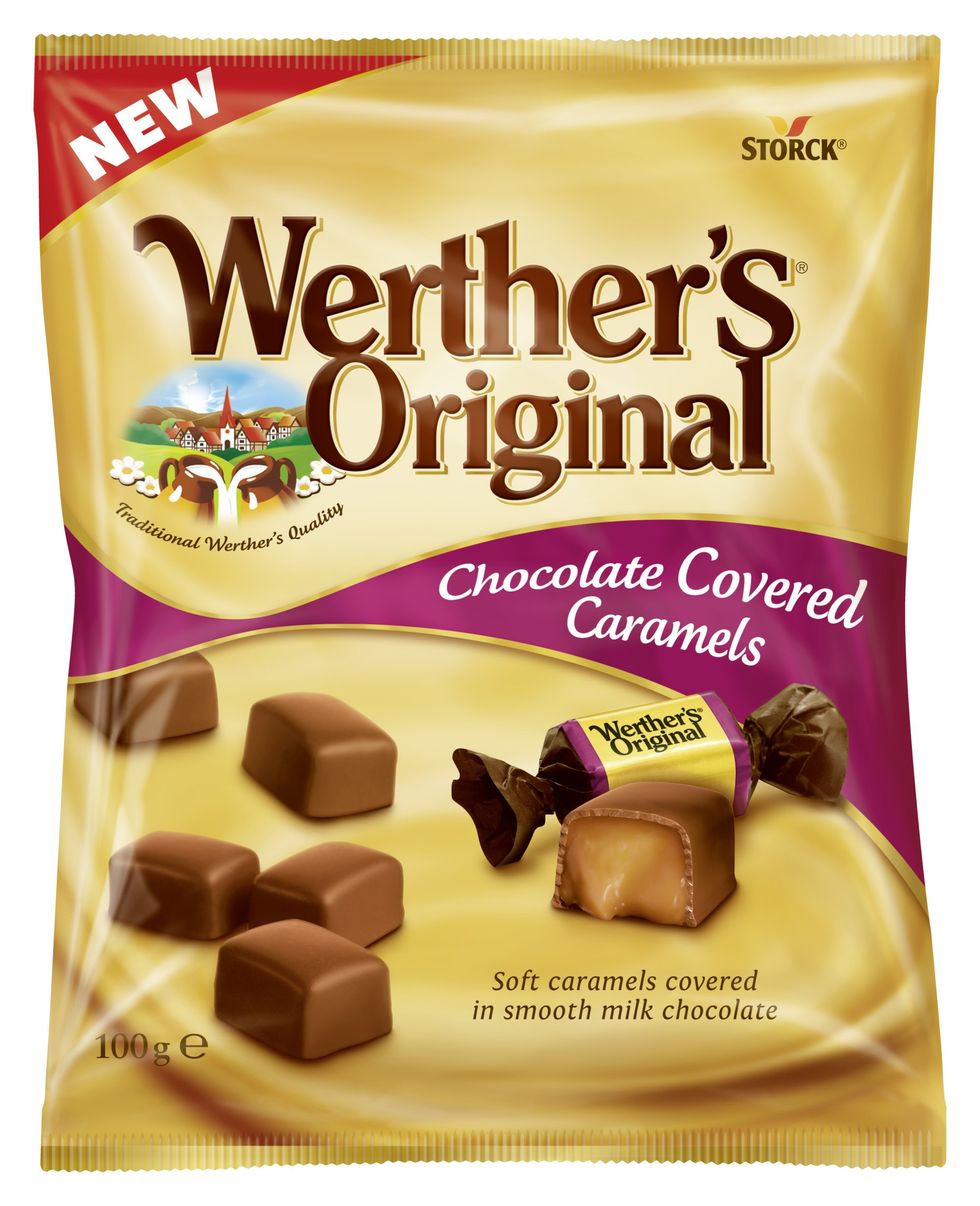
The market is experiencing interesting polarisation, particularly in sugar confectionery. Andy Mutton, Managing Director at Storck UK, reports that “premium brands and value players enjoying strong double-digit growth,” which “highlights opportunities at both ends of the pricing spectrum.”
Consumer behaviour continues to drive category performance, with Mark Roberts, Marketing and Trade Marketing Director at Perfetti Van Melle UK, highlighting that “60 per cent of UK consumers buying sweets in order to lift their mood, with a further 23 per cent making confectionery purchases as gifts.” This emotional connection provides opportunity against “an economically challenging and politically gloomy landscape.”
For retailers, the chocolate gifting segment represents a particular bright spot, having “experienced a strong value growth of 13 per cent, along with volume growth of three per cent, making it the standout segment in the category,” according to Mutton.
The conscious consumer
Today's confectionery customers are increasingly examining the ethical credentials behind their favourite treats.
“Consumers are more aware of sustainability across the confectionery sector. They want brands to be working with farmers that are paid a fair price and they also want to know that after they've consumed their treats they can easily recycle the packaging,” Cox observes.
This heightened environmental consciousness extends beyond ingredient sourcing to packaging innovation. Brands that can demonstrate genuine commitment to sustainability are finding favour with shoppers seeking to align their purchases with their values.
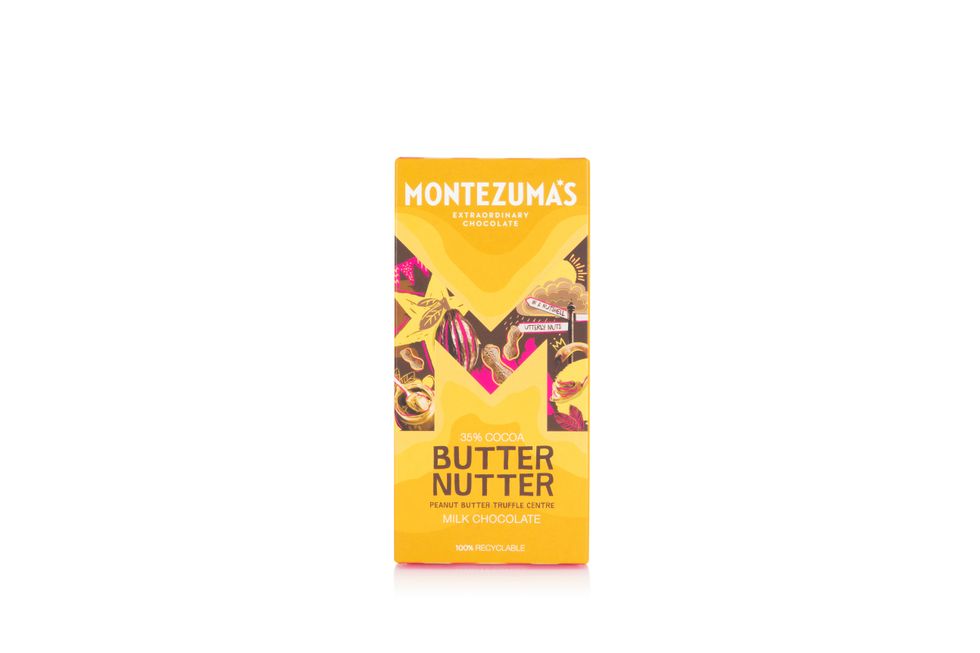
The appeal of familiar flavours remains strong, particularly during economically challenging periods. Whapshott, of Montezuma's Chocolates, explains: “Nostalgia is having a moment, and it's no surprise – when times are uncertain, consumers turn to comforting, familiar treats. Classic flavours with a twist, like our rhubarb and custard bonbons, are proving especially popular.”
This sentiment is echoed by Kathryn Hague, Head of Marketing at World of Sweets, who notes: “The appeal of retro sweets continues to thrive, nostalgic ranges like Candy Realms Watches & Necklaces Bags are 2024 bestsellers that tap into childhood memories.” The forthcoming “Candy Realms Candy Whistles and Lipsticks launching in 2025 combines nostalgic fun with modern branding,” demonstrating how manufacturers are reimagining classic concepts for contemporary consumers.
Experiential indulgence
Beyond nostalgia, consumers are seeking new experiences through their confectionery choices. Whapshott identifies “a growing appetite for experiential indulgence – think bold flavour combinations and multi-sensory treats that bring a little excitement to everyday moments,” adding: “ Retailers who tap into this blend of comfort and creativity will keep customers coming back for more!”
This trend toward sensory exploration is particularly evident in the younger demographic. PVM’s Roberts highlights Mentos Discovery that broke ground in the category with 14 flavours.

“With a revolutionary number of flavours in one roll, Mentos Discovery appeals to the naturally more adventurous Gen Z, eager to experiment and try new things, and encourages flavour discoveries to be shared,” he says.
The search for novel taste experiences extends to texture variations as well. According to Hague, “Texture and flavour mashups are also increasingly popular, giving customers a unique experience. Candy Cups offer a great mash up of flavours and textures, featuring jellies and gummies, Bonds Bubble Gum Bonanza Candy cup Fizzy Bottles, Jelly's, Foams and Fruity Cox Mix Fizzy, gummies and Flying saucers.”
BNI: Sociable sharing
With economic pressures continuing to influence spending habits, home entertainment has become an increasingly attractive option for consumers. Susan Nash, Trade Communications Manager at Mondelēz International, observes: “We've seen that shoppers are increasingly looking to enjoy evenings at home as a more cost-effective way to spend time with family and loved ones.”
Mutton, of Storck UK, elaborates: “The Big Night In occasion remains as popular as ever, as shoppers look to save money while still enjoying time with family and friends. As consumers gather to socialise and connect, many turn to larger pack sizes of their favourite sweet treats to share with loved ones.”
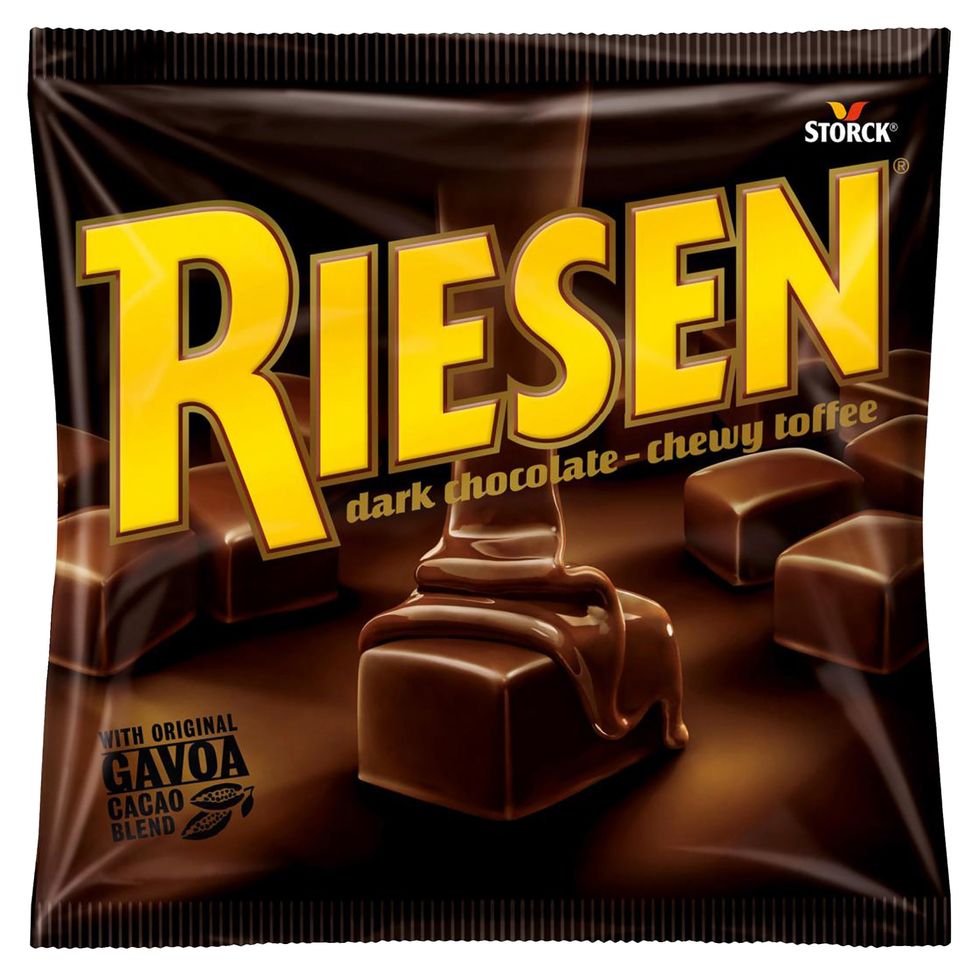
This shift has significant implications for product formats. Nash explains that “the evening occasion is the key time of day for sharing, with tablets and bags being the most convenient and popular format for the consumer.” Mutton adds that “(the) sharing bags continue to dominate the sugar confectionery category, accounting for £430 million in sales in convenience, growing by 6.5 per cent in value.”
Brands like Werther's Original and Riesen are capitalising on this trend with a variety of pack sizes designed for group consumption. Specifically, Riesen offers 135g Sharing Bags while Toffifee provides options from 125g up to 400g packs, making them “affordable and ideal for self-consumption, small gifting and family sharing with a range of sizes to fit every budget.”
Brand loyalty resurgence
Despite economic considerations, consumers are showing renewed loyalty to established confectionery brands.
“Recent data has shown that consumers are going back to brands, and families are driving the way we share our snacks over seasonal occasions,” Nash reveals. “In the gifting and sharing segment, brands are outstripping the own label competition with 11.2 percent total category growth YTD [Nielsen].”
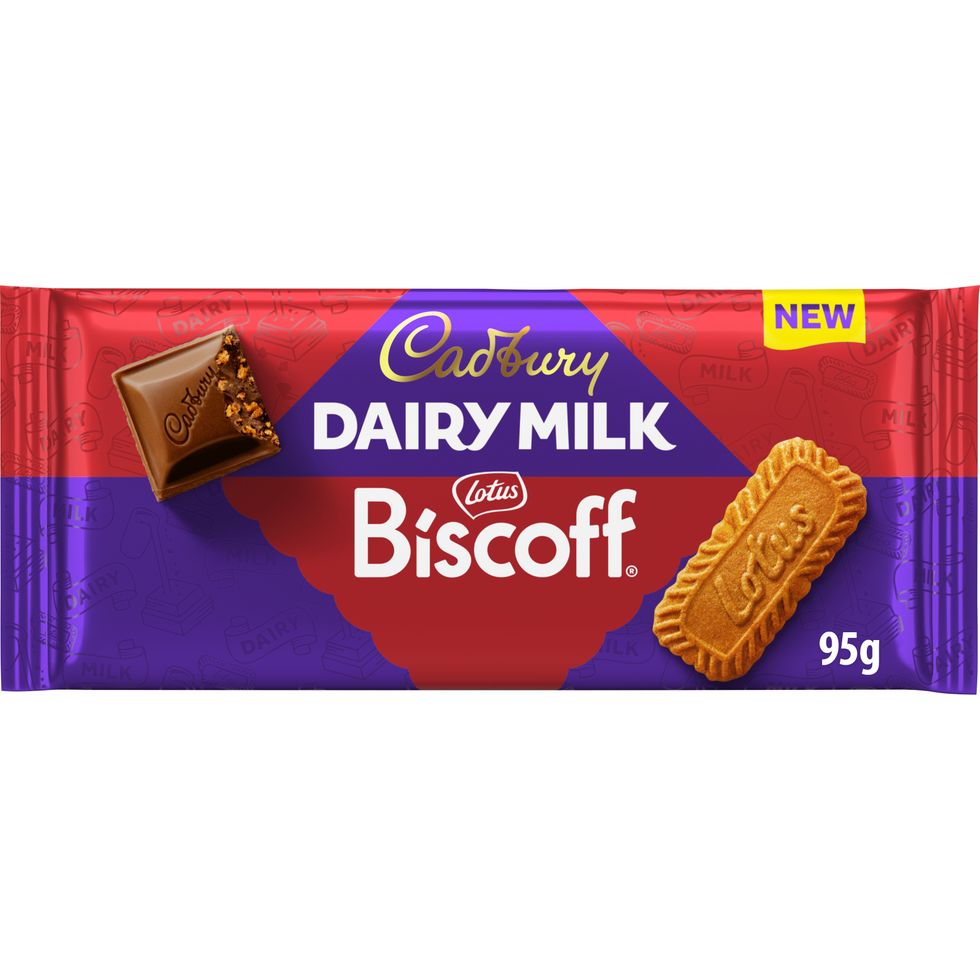
This trend is reflected in specific product performance. Nash notes that the “Cadbury Dairy Milk 360g bar grew by an incredible 32 per cent in value in 2024 and has also experienced 16.8 per cent volume growth, showing a real demand among shoppers for their favourite chocolate in this gifting and sharing format.”
Similarly, Mutton reports that “Werther's Original continues to lead the UK traditional sugar confectionery market, with a value of £36 million, maintaining its position as the No. 1 brand in the segment.” Likewise, “Riesen is the leading dark chocolate toffee brand, now valued at £4.9 million in retail sales value.”
Navigating HFSS
The implementation of HFSS (High in Fat, Salt or Sugar) restrictions has accelerated innovation in healthier alternatives. Mutton notes: “The impact of HFSS restrictions has been particularly pronounced in the sugar category, as the loss of discretionary space and multi-buy promotions has posed challenges.”
However, this regulatory shift also presents opportunities. Mutton advises that “retailers can drive confectionery sales with non-HFSS products by offering popular classics such as Werther's Original, available in sugar-free range. Being non-HFSS, these products can be placed anywhere in-store, allowing retailers to maximise shelf visibility and capitalise on consumer demand for healthier options from trusted brands.”
He highlights that “Werther's Original Sugar Free stands as the leading sugar-free brand. Made with real butter and fresh cream, these indulgent treats provide the signature taste of the brand, with no added sugar and fewer than 20 calories per piece. The sugar-free range, valued at £5.1 million, commands 57 per cent of the sugar-free market share.”
Clare Newton, Trade Marketing Manager at Swizzels, adds: “With new HFSS advertising restrictions coming into effect in October, lower-sugar options are becoming more prevalent in the confectionery category and appeal to an increasing number of consumers seeking a healthier option. Vegan options remain popular and the variety of products in this sub-category is evolving, helping retailers to provide a more diverse offering.”
Seasonal events also continue to drive significant confectionery sales. “Seasonal occasions represent significant additional sales opportunities,” Nash notes. “Easter and Christmas are the biggest occasions in the retail calendar for the category, but other seasonal spikes such as Valentine's Day, Mothers' Day, Fathers' Day, Diwali and Halloween can also be maximised in store to unlock more sales.”
Newton also highlights the growth of seasonal confectionery, which continues to drive sales. “Shoppers now expect a wide range of products for specific occasions throughout the year,” she says. “Stocking novelty, limited-edition treats can help retailers create a dedicated space in-store for products related to seasonal events, appealing to customers looking to stock up for celebrations, as well as those seeking confectionery gifts.”
Specific limited-edition products, such as the highly anticipated limited-edition Toffifee White Chocolate, launched in April 2025, tap into this seasonal excitement while adding “value to basket spend.”
Value and innovation
With economic pressures still influencing purchasing decisions, clear communication of value remains crucial. Mutton highlights the importance of price-marked packs (PMPs), which “offer reassurance by clearly demonstrating value, helping to build trust between retailers and consumers. In addition to providing a clear price point, PMPs are versatile, catering to a wide range of occasions and shopping needs.”
Continuous innovation in both product format and flavour profiles keeps the category fresh and engaging. Roberts details how “Chupa Chups has taken a bold step into the extruded jellies market with the launch of the new Chupa Chups Belts and Laces range, plus the launch of Chupa Chups Bites and Tubes in summer 2024.”
Tapping into the growing demand for sour and fruity sweets, the Belts and Laces range comprises of tantalising Sour Mixed Belts, Sour Apple Belts, Sour Strawberry Belts, and Strawberry Laces.
Newton confirms this flavour trend, noting that “Tropical and sour flavours are also trending at the moment, and the industry is responding by innovating in this area by adding a new twist to a classic product or announcing new creations. Retailers should look to stock new innovations featuring fruity and tangy flavours to appeal to consumer demand.”
The fusion of beloved alcohol brands with chocolate and confectionery also continues to create significant sales opportunities for convenience retailers. As consumers increasingly seek premium treating experiences, licensed products are emerging as powerful drivers of incremental revenue.
Declan Hassett, Licensing Manager at Diageo, reveals the scale of this opportunity: “Treating is big business and a hugely exciting and dynamic occasion for retailers to tap into and take advantage of the opportunity it provides. The consumer traction for the treating trend is only expected to grow, with the global treat category expected to be worth $479bn in 2027, with a compound annual growth rate of 4.4 per cent.”
This growth is particularly evident in the chocolate segment, which Hassett identifies as “the biggest treat category, worth over £6.8bn” within the UK's treating market. Despite economic pressures, consumers remain committed to affordable indulgences.
“A recent survey revealed that despite the uncertain economic climate, consumers are continuing to spend on affordable luxuries, showing a willingness to treat themselves to small, accessible items,” notes Hassett.
“When we combine this category with the growing premiumisation trend, where shoppers are demanding enhanced quality and value, we can see a big opportunity for retailers as this indicates that shoppers are willing to spend more on treats.”
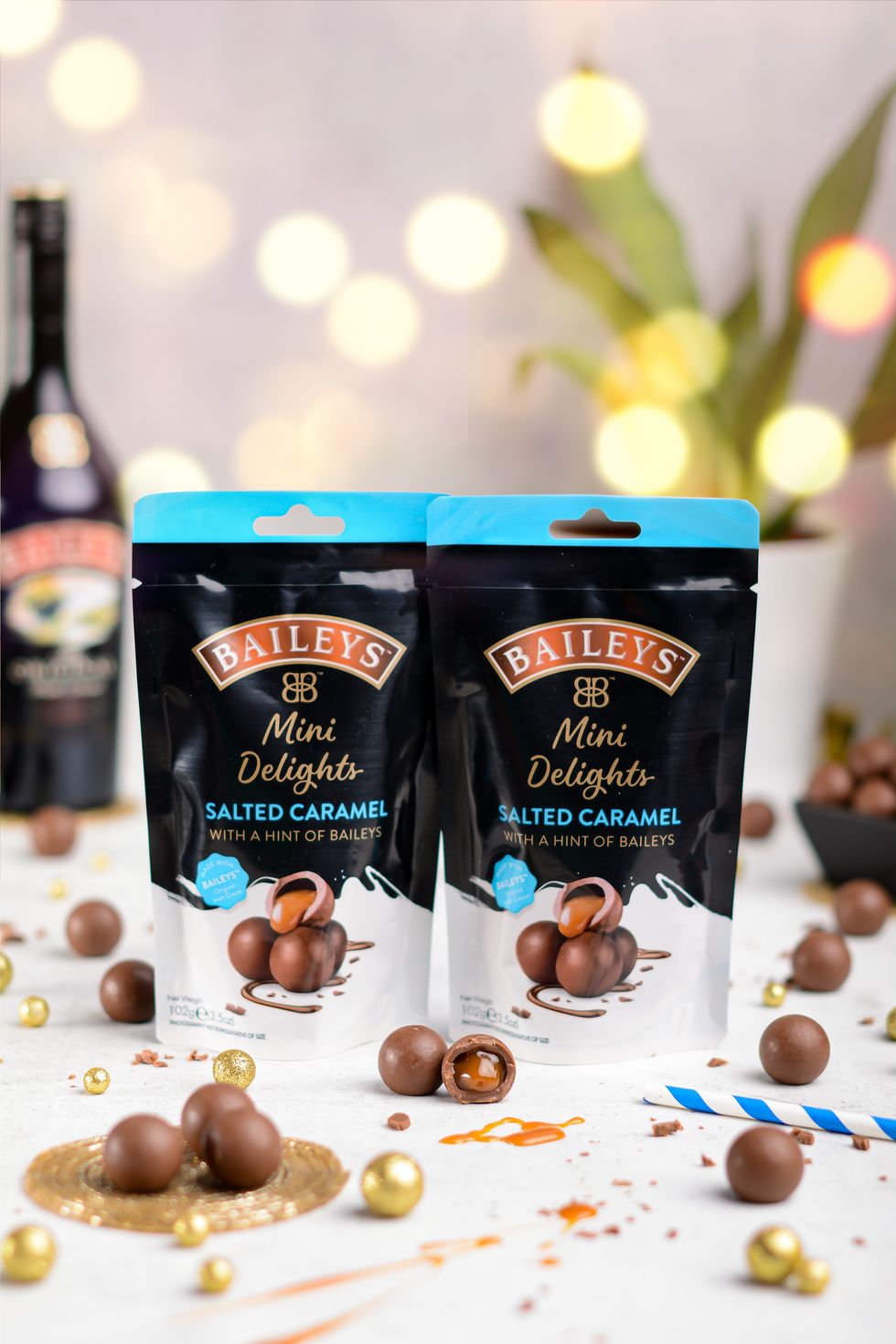
Brand licensing represents a substantial opportunity within this landscape. “The food and beverage category is now one of the fastest growing sectors within the brand licensing industry, worth £58bn, and Diageo is the number one alcohol global licensor, generating $400m in retail sales annually,” Hassett reveals.
The success of Baileys' licensed confectionery products illustrates the potential. “Baileys – the number one loved spirits brand in GB – is synonymous with treating,” says Hassett. “The brand's licensed products take the distinctive taste, unique flavour and quality of Baileys Original Irish Cream into new areas of the store ... with the potential to drive up to 20 per cent uplift in incremental sales for retailers.”
Consumer engagement with these products is impressive. “More than four million licensed products sold in the UK last year, equating to one product sold every eight seconds, and 24 million products sold globally,” explains Hassett. “Almost one in 10 households in GB buy Baileys licensed products, which equates to 2.5 million shoppers.”
For retailers looking to maximise sales, strategic merchandising is crucial. Hassett advises considering placement “not only in the category aisle, but on end displays and checkout counters to disrupt shoppers and encourage impulse purchases whilst on their treat shopping missions, 62 per cent of shoppers make impulse purchases when attracted to an appealing display.”
Additionally, “Eye-level shelves also generate 35 per cent more sales compared to lower or higher-level placements,” making optimal positioning essential for these premium products.
Strategic merchandising
Creating impactful confectionery displays is essential for driving sales in convenience retail. Variety is key to meeting diverse consumer preferences, as Gavin Cox, of Cox & Co, explains: “It's important for retailers to offer a selection of choices to suit all tastes from standard milk chocolate, to high cacao content, as well as those that target special diets such as plant-based or free-from chocolate lines.”
Cox & Co range is vegan friendly and offers a high cacao content with interesting flavour combinations, whilst HAPPi uses oat milk for those avoiding dairy.
Visual appeal plays a crucial role in attracting shoppers. Newton, of Swizzels, advises: “Confectionery lends itself to bright, eye-catching displays so retailers should use impactful signage and standout talkers to highlight their range within this category. Customers often make impulse sweet treat purchases, so confectionery should be placed near the tills and at eye level to catch consumer attention.”
Whapshott, of Montezuma’s Chocolates, suggests thinking beyond traditional display areas: “We love the use of clip strips in areas of stores where people may be thinking about chocolate, such as next to the wine. These can help show off the colours and flavours and bring a pop of confectionery fun to any part of the store.”
The firm has just finished rebranding for Bristows, which sees traditional bagged sweets now come in fun new packaging. Whapshott says retailers can make the most of this by creating eye-catching displays that “let the colours do the talking”.
For seasonal opportunities, Newton recommends retailers to “group complimentary products together in a themed section of the store, making it easily identifiable for shoppers and driving cross-selling opportunities.”
Practical merchandising fundamentals remain important, as Hague, of World of Sweets, points out: “Retailers should ensure they have a strong display, and that their shelves are well stocked throughout the day. Products should also be brought forward to show the full display of merchandise. This will catch the customers eye, and boost intrigue, turning into impulse buys.”
She also encourages clear signage about any current promotions and offers to attract customers to the shelves.
For retailers seeking additional guidance, Mondelēz’s Nash highlights available resources: “Our retailer website, www.SnackDisplay.com has category tutorials that are perfect for new starters who would like to get to grips with their ranges, and category display pages for any staff who have designated areas of the store to look after and want a quick and easy reference point,” she explains.
“Retailers are often pressed for time, so within our ‘tools’ page we provide useful resources that can provide a helping hand. These include a quick reference best-seller list, re-sharable social media content, and a profit calculator. Point of Sale can be requested here, too.”
Sweet advantage
Independent retailers have unique opportunities to compete with – and even outperform – larger chains in the confectionery category by leveraging their distinct strengths and flexibility.
Product differentiation represents a key competitive advantage. Cox emphasises the importance of “offering non-mainstream brands with real provenance and stories behind the brand, rather than simply focussing on mass market chocolate and price.”
This strategy capitalises on the nature of confectionery purchases, as Cox notes that “chocolate is perfectly placed for the convenience sector as it is often purchased on impulse and quite often price is less of a consideration than in a usual grocery store.”
The ability to create distinctive shopping experiences provides another edge. Whapshott, observes: “Independents can offer a more personal, curated experience that big retailers just can't match. At Bristows of Devon, we see how independents thrive by stocking unique flavours that you don’t see in the bigger supermarkets.”
She highlights how “customers love discovering something special,” whether through unique flavours or traditional serving methods, adding that “a good example of this is selling sweets by weight in the traditional sweet shop fashion.”
Agility in responding to trends represents a further competitive advantage. Newton advises that “retailers should keep an eye on trending confectionery as they can react faster than the multiples, meaning they can get ahead of the curve by stocking up early and marketing themselves as the go-to place to pick up new confectionery.” She suggests that “social media can be a great tool for keeping on top of trends in the category.”
Personal connections with customers also create opportunities for differentiation. Newton recommends “offering a more personalised service” that might include “highlighting new items, or offering samples, for repeat customers who often purchase confectionery.”
Finally, price transparency can build consumer confidence. Newton points out that “stocking price-marked confectionery can also provide a point of difference from the multiples and help to build price confidence and loyalty with customers who appreciate the cost transparency.”
Winning formats and trends
The confectionery landscape continues to evolve with shifting consumer preferences driving innovation across both chocolate and sugar categories. In the convenience channel, specific formats have proven particularly effective at capturing impulse purchases and meeting consumers' on-the-go needs.
Single-serve and smaller portion products remain crucial for convenience success. Newton stresses that “single confectionery, such as our chew bars, and on-the-go formats, including our popular 60g Squashies, perform well in convenience as people are often looking for a quick treat or pick me up.”
Whapshott confirms this trend: “In convenience stores, grab-and-go treats and impulse buys are king!” She highlights that “Smaller pack sizes and shareable formats are ideal for quick treats, while bright, eye-catching packaging helps them stand out on busy shelves.”
While impulse purchases drive significant traffic, sharing bags continue to gain traction. Newton notes that “sharing formats such as our variety bags (Luscious Lollies, Curious Chews and Scrumptious Sweets), are popular with those looking for a treat to take to an occasion with family or friends as they offer something for everyone and are packed full of individually wrapped sweets.”
PVM’s Roberts highlights the dominant market position of this format: “Share bags dominate the confectionery market, accounting for 71.4 per cent of sweet value sales – perfect timing for Mentos to strengthen its offering here.”
This trend is further emphasised by Andy Valentine, Head of Marketing at Stockley's, who reports that “in 2024 sharing formats (bags, boxes) grew by a staggering 8.7 per cent.”
Several key consumer trends are shaping product development across the category.
“Dark chocolate is definitely showing more consumer pick-up and brand activity; however, taste is still the predominant factor in consumer buying decisions,” Cox observes. “People want good quality chocolate and aren't prepared to compromise. Consumers are still wanting a treat, but are seeking more interesting flavours and are buying less frequently.”
Bold and unique flavours continue to drive interest. Roberts notes that “berry flavours continue to be a consumer favourite, with red fruit growing 19 per cent in the last year,” adding that “Raspberry, Cherry, Blackcurrant, and Mixed Berry sweets saw a 10 per cent rise in sales.”
Valentine highlights growing consumer enthusiasm for “contrasting flavours and textures,” exemplified by Stockley's new offerings where “Jam Roly Poly & Custard blends tart with sweet whilst Choc-Scotch marries brittle and soft.”
Health-focused alternatives are creating new opportunities. “With consumers ever more health-conscious, Perfetti Van Melle offers a full range of sugar-free and reduced sugar alternatives that supports the governments HFSS guidelines of under 150kcal per pack,” Roberts explains.
He notes that “Smint occupies the dominant share of the sugar-free mint market at 36 per cent,” while “Mentos Gum was voted 'unbeatable on taste and flavour' following consumers in summer 2024.”
Inclusive dietary options are also gaining traction. “Fruit-tella's full range of chews have transitioned to a fully vegan recipe,” Roberts explains, which “expand reach to a wider, more dietarily inclusive audience.”
NPD and promotions
Retailers looking to refresh their confectionery offering have numerous new products to consider.
Nash highlights the new Cadbury Dairy Milk Biscoff, “combining the best of smooth, creamy, Cadbury Dairy Milk with the much-loved crunch and unique taste of Lotus Biscoff's biscuits.” This collaboration “looks to tap into consumer interest in new flavours and textures and drive cross-brand excitement to help drive incremental growth.” The product launched in early March, in both 105g non-PMP, and 95g PMP and non-PMP formats.
Cox & Co has recently launched their Cox & Co Blood Orange Crunch bar and they also have new innovations for Easter.
Ahead of Easter, Swizzels has launched its Squashies Drumchick with a bold new look, including bright, redesigned packaging and an upgraded chick-shaped design to make sure they stand out on shelves and help retailers drive seasonal sales.” Featuring a unique dual-flavour combination of orange and pineapple, the limited-edition product is available in 120g bags, in packs of 12, and comes with an MRSP of £1.15.
“With rising demand for alternative sweet treats, Squashies Drumchick can help retailers expand and elevate their Easter offering beyond chocolate and appeal to consumers looking for a treat for themselves, or to share with family and friends, during the occasion,” Newton says.
Newton also highlights that “Squashies are worth £12.3m in independents and hold the top spot as the number one sugar hanging brand in the market.”
Roberts introduces Mentos Feeling Berry Good sharing bag as “the latest berrylicious addition to the brand's already burstingly-delicious Fruit Mix sharing bag, giving consumers even more opportunity to say Yes to Fresh!” The product features “three fresh and delightful berry flavours; tangy cherry, juicy Blueberry and refreshing raspberry” that are “vegan-friendly whilst guaranteeing the signature Mentos experience of crisp outer shell with soft, chewy centre that fans know and love.”
World of Sweets has unveiled several innovative products, including Sweet Vibes Mallow Dunks, featuring soft marshmallows dipped in chocolate and coated with a crispy, Smartie-like shell.
Hague highlights Warheads Sour Popping Candy for 2025, describing it as “a novelty product, offering a crackling, popping sensation with a sour twist, aimed at younger customers seeking exciting new novelty products with tasty, trending flavours.” These will be available in Sour Watermelon, Sour Green Apple and Sour Raspberry flavours.
Additionally, Hague previews “the PEZ Stitch dispenser,” encouraging “retailers to stock up on this new addition to the PEZ range to drive sales ahead of the new movie launch this spring.”
From Barratts comes a new range of tasty candy flosses launching ahead of the summer months, including innovative varieties like Wham candy floss which “includes popping candy encased in a sour raspberry flavoured floss.”
Valentine introduces two new products from Stockley's: “NEW 'newstalgic' arrivals Jam Roly Poly & Custard (think about a sublime Rhubarb & Custard complete with a rich berry stripe and a chewy raspberry centre) and Choc-Scotch (dreamy marriage of crisp butterscotch encircling a milk chocolate core).”
The premium segment appears particularly strong, with Valentine reporting that following significant growth over the past 12 months, with the arrival of new distributors like Cotswold Fayre and Cress, Stockley's is “in no mood to take its foot off the throttle,” suggesting strong momentum in the premium sugar confectionery space.
Whapshott reveals that their new £1 range of Bristows sweets includes gummy mixes, traditional bon bons, fudge and many more treats. The range has been created as a way to take Bristows expertise in making delicious traditional sweets with the design and innovation expertise of the wider Great British Confectionery Group team.
Promotional activity remains crucial for driving category growth, with several brands launching significant campaigns.
Nash announces that Cadbury Fingers, “the beloved biscuit brand with 128 years' history,” is also bringing back its Fingers Crossed on-pack promotional campaign for shoppers, giving consumers the chance to win if they find a crossed chocolate finger in their pack: “Shoppers could win cash prizes ranging from £50 up to an incredible £20,000!” she says.
Susan also shares that Cadbury is bringing back the “Worldwide Hide” for its fifth consecutive year, describing it as “the ultimate interactive Easter egg 'hide and seek' activity bringing people together and encouraging sharing and gifting to those who matter most.”
Meanwhile, from 1 May to 30 June, Toffifee is giving shoppers a thousand chances every week to download the latest films with a £5.50 voucher on Rakuten – creating the ultimate movie night.
Muttons says this promotion taps into the fact that “watching movies at home has become the UK's #1 popular social activity, enjoyed regularly by a massive 87 per cent of people.” He advises retailers that “With 83 per cent of Big Night In purchases pre-planned, retailers can maximise sales by stocking up ahead of peak weekend demand.”
Looking forward
With numerous innovations hitting shelves and established trends continuing to evolve, the confectionery category remains dynamic and full of opportunity for convenience retailers. As Nash notes, “in 2024 consumers showed us they are still looking for treats, despite economic considerations still being on their agendas while inflation eases.”
Successfully navigating this landscape requires a carefully balanced approach, stocking the right mix of trusted brands, innovative products, healthier alternatives, and seasonal specialties.
By focusing on the formats that work best in convenience, staying attuned to changing consumer preferences, and making space for exciting new products, retailers can ensure this category remains a sweet spot for their business throughout 2025 and beyond.
Hague provides a final piece of advice for keeping shelves fresh and exciting: “It's worth considering re-stocking around every six months to stay up to date with new novelty ranges and ensure that every time a customer looks at the shelf, it feels as though they've spotted something new.”






